What are we getting wrong about the orgasm gap?
Beducated Customer Survey, June 2023.
Straight men have a lot more fun during sex than their partners. That’s no earth-shattering claim; we’ve known about the orgasm gap — i.e., men are more likely to orgasm than women during straight sex — since the 1960s. You’d think six decades of sensational media headlines, gender activism, and guides to the clitoris would have solved the issue by now. They haven’t.
Make sure to check out Beducated's Sexual Health Online Courses

So, what are we getting wrong about the orgasm gap? In June 2023, we set out to try and answer that question with the help of our bi-annual Beducated Customer Survey. Here’s what we found.
Men are ~2x more likely to orgasm regularly during straight sex than women.

When we asked Beducated users how often they orgasm during partnered sex, 46% of our female respondents said they orgasmed “every time” or “most of the time.” For men, it was 85%.
“It’s not surprising at all,” says Julia Svirid, in-house Sex Coach at Beducated. “Thanks to porn, Hollywood, and a lack of pleasure-based sex education, sex is constantly equated with penetration.” That’s a problem because most women need more than penis-in-vagina action to get off.
But when it comes to masturbation, the orgasm gap disappears.

This shows that, straight or not, women know what they need to climax. That might be exactly what we’re getting wrong with the orgasm gap; calling it a “gap” is like saying there is a lack of orgasms. But the orgasms are there.
So what makes them disappear when there’s a partner involved?
Women fake more orgasms than men.
The survey also asked users if they had ever faked an orgasm, to which 58% of female respondents said they had. In contrast, 23% of men said the same.

Why do women fake orgasms?
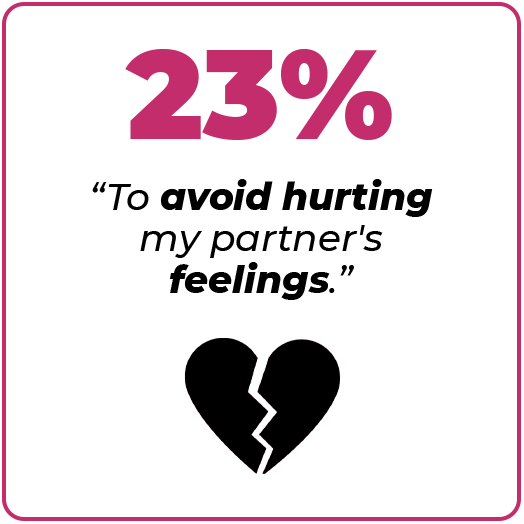
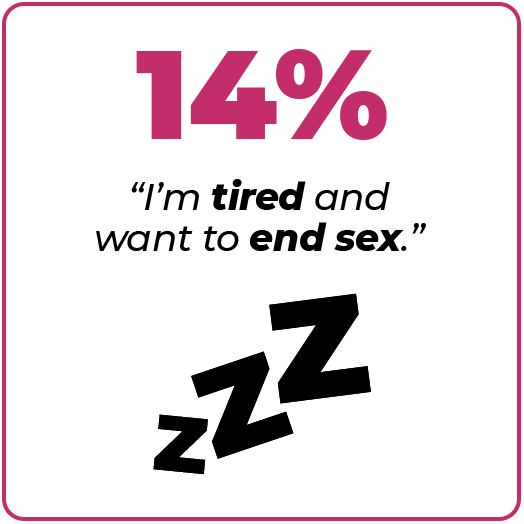
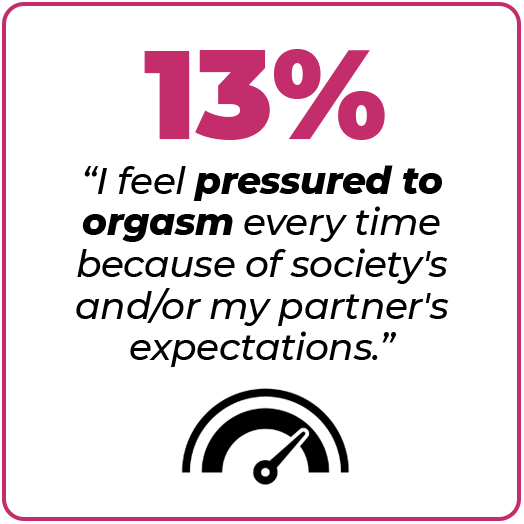
“The common theme here is a lack of communication,” says Svirid. “That’s a shame because communication is an essential ingredient to a pleasurable sex life. You can’t have one without the other.” Honesty in the bedroom makes partners better at both giving and receiving pleasure. It creates a safe environment that allows us to relax.
Furthermore, it can mitigate tensions and disappointment that arise due to unverbalized needs. “Most of us never learned how to communicate our needs and boundaries in the bedroom,” Svirid explains. “Many people don’t even know that stopping or re-adjusting during sex when something’s off is an option.”
Sex ed isn’t helping.
So why are we so bad at communicating in the bedroom? Svirid stresses we shouldn’t blame ourselves. Instead, she says, blame it on the current state of sexual education. “Sexual communication skills come with pleasure-based sex education, which most of us don’t have access to.”
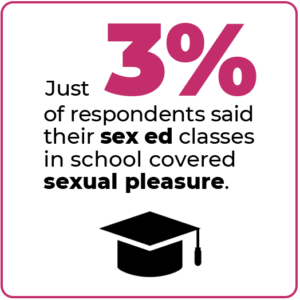
Data from our survey confirms Svirid’s claim. When we asked our users what they learned about in their sexual education classes in school, most said they learned about avoiding unwanted pregnancies (62%) and how to stay safe from Sexually Transmitted Infections (58%). Sixteen percent said they did not receive sex ed in school.
Out of 590 respondents, just 18 said their sex ed curriculum touched on sexual pleasure. That doesn’t just cause us to have fewer orgasms down the line; pleasure is also a fundamental part of consent.
“Imagine a world in which we’re taught to ask our partner what they enjoy and share what we love in return,” says Mariah Freya, CEO of Beducated. Such a world, Freya claims, could be the reality if only we were taught about pleasure, relationships, and communication early on. “Pleasure empowers us to explore our likes, dislikes, and boundaries so we can communicate those with our partners with confidence,” she explains.
Men don’t know what they’re doing. Women don’t know how to tell them.
That’s how you get a situation where women aren’t getting off as much as men during partnered sex. The fact that the disparity in orgasms disappears in self-pleasure means women know what they need to get there; they just don’t know how to communicate that.
Combine that with the fact that our education doesn’t empower us to understand pleasure, and you’ve got yourself an orgasm gap. “It would be a miracle if this situation didn’t exist,” says Svirid.
Where do we go from here?
There are a few things that need to happen to end orgasm inequality. Firstly, Svirid says men need to understand how female bodies experience pleasure. “[They need to] let go of the penetration-centered approach to partnered sex.” As for their female partners, Svirid prescribes a lesson on sexual communication. “But they also need to fully embrace the fact that they deserve pleasure.”
Another step we can take is to stop treating sex ed as something that begins and ends in the classroom. Freya says: “Our sex life is dynamic; it goes through different stages as our environment, relationship to ourselves and others, and physical health change throughout our lives. I call this a sexual lifecycle. That’s why sex education should be treated as a life-long learning process, not a one-off class we take as teenagers.”
About the survey:
The results stated in this blog post were sourced from responses to the June 2023 Beducated Customer Survey. It received a total of n=590 participants.
Gender Breakdown

Locations

Age Groups
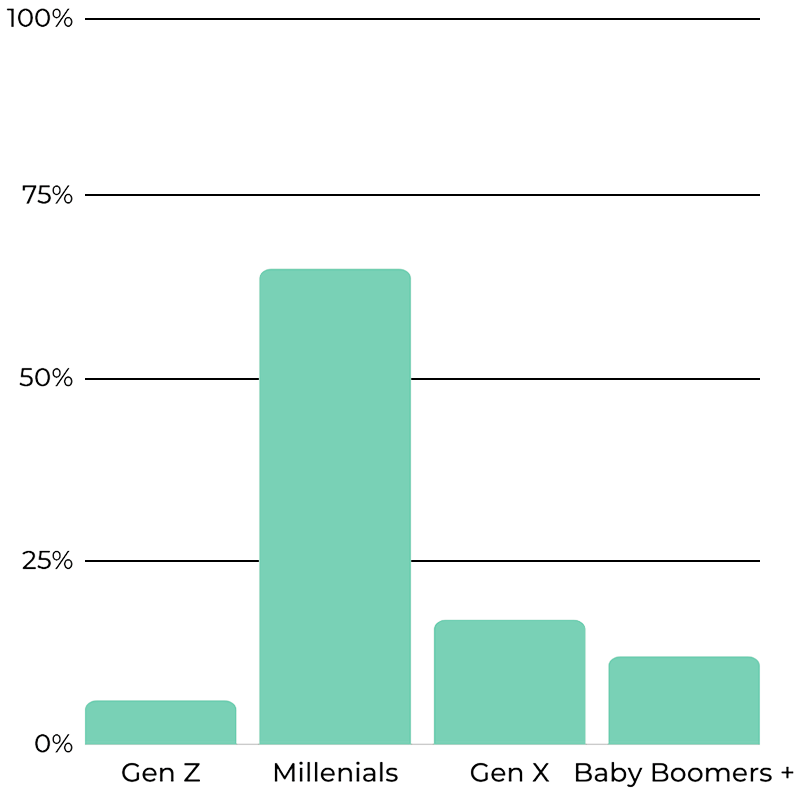
Make sure to check out Beducated's Sexual Health Online Courses






